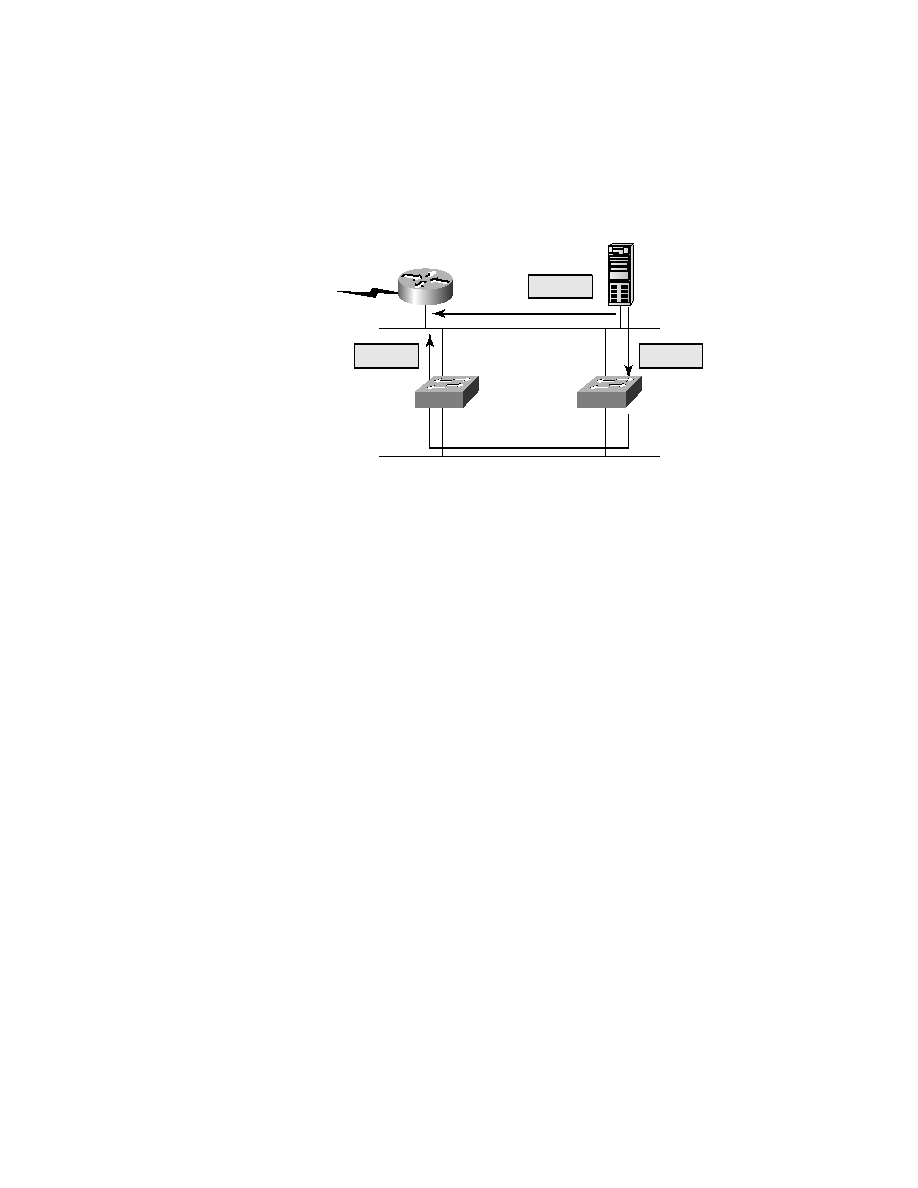
86
Chapter 2
Layer-2 Switching
F I G U R E 2 . 7
Multiple frame copies
You may have thought of this one: The MAC address filter table will
be totally confused about the device's location because the switch can
receive the frame from more than one link. And what's more, the
bewildered switch could get so caught up in constantly updating the
MAC filter table with source hardware address locations that it will
fail to forward a frame! This is called thrashing the MAC table.
One of the nastiest things that can happen is multiple loops generating
throughout an internetwork. This means that loops can occur within
other loops, and if a broadcast storm were to also occur, the network
wouldn't be able to perform frame switching--period!
All of these problems spell "hosed" or "pretty much hosed" and are
decidedly evil situations that must be avoided, or at least fixed somehow.
That's where Spanning Tree Protocol comes into the game. It was developed
to solve each and every one of the problems I just told you about.
Spanning Tree Protocol (STP)
B
ack before it was purchased and renamed Compaq, a company called
Digital Equipment Corporation (DEC) created the original version of
Span-
ning Tree Protocol (STP).
The IEEE later created its own version of STP
called 802.1D. All Cisco switches run the IEEE 802.1D version of STP, which
isn't compatible with the DEC version.
Segment 1
Segment 2
Unicast
Unicast
Unicast
Router C
Switch A
Switch B
Copyright ©2002 SYBEX, Inc., Alameda, CA
www.sybex.com
